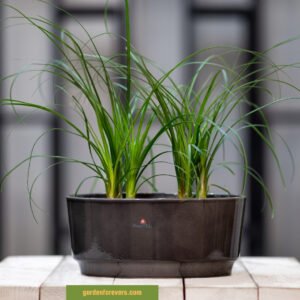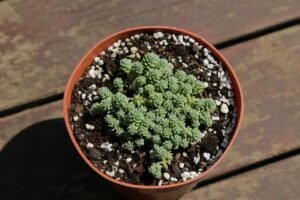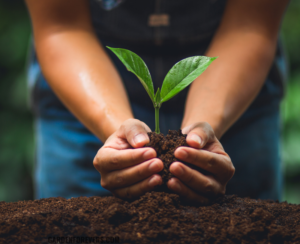What do carrot sprouts look like When They Start to Grow?

Carrots and sprouts are well known to be very nutritious and beneficial vegetables. Carrots are mainly a winter crop. It contains vitamin A, beta-carotene, antioxidants, and other nutrients that are beneficial for the eyes. Both carrots and the seedlings or sprouts are used as food in various ways. At first, these sprouts look like grass. However, after a few days, it turns into a fern-like leaf. Both carrots and sprouts play an important role in meeting the nutritional needs of our diet.
Quick Carrot Plants Facts
Common name: Carrot
Family: Apiaceae or Umbelliferae
Scientific Name: Daucus carota
Other Names: Zanzibar Gem, Eternity Plant, Aroid Palm
Origin: Europe, Southwestern Asia
Plant Type: Vegetable
Size: Root is approximately 6 to 12 inches long, foliage height is 1 foot; foliage is around 9-inch
Sun Exposure: Full sun to partial shade
Color of leaves: Glossy green leaves
Bloom Time: Spring (second growing season)
Flower Color: Yellow to brown spadix
Ideal soil type: Well-drained and loose soil
Ideal pH of soil: Slightly acidic; pH 6.0 to 6.8
Propagation: Stem cutting
Hardiness Zones: 3–10 (biennial grown as an annual)
What Do Carrot Seedlings Look Like?
Carrot seedlings are threadlike in appearance, of very delicate growth and have finely cut foliage. They come out as little bright green sprouts that look like grass when they first grow. The leaves become more fern-like as they mature, having delicate lacy edges. One type of seedling characteristic is that they usually have a single stem, often several inches in length and occurring as clusters (due to the way carrot seeds are sown). In fact, the healthier your carrot seedlings are initially, the more solid of a foot path you have on which to send them off for root development.
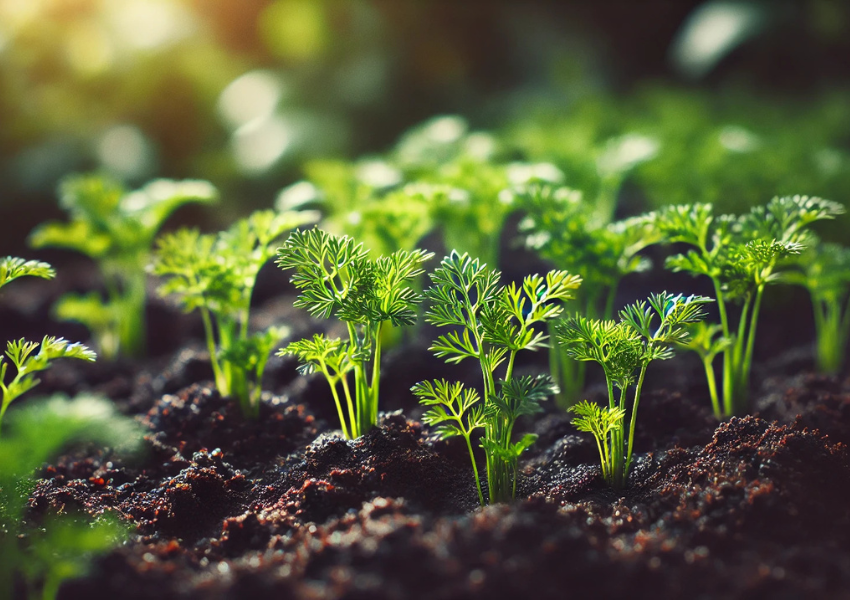
What do carrot sprouts look like?
When the carrot seedlings first come out of the ground, it looks very delicate and slender. The first leaves of the plant are smooth and straight. These leaves are known as cotyledons. At this stage, the root leaf of the carrot is usually narrow and looks like a blade of grass or a thin green needle that looks like a seedling of other weedy plants. Therefore, many times this carrot seed is mixed with weeds. However, after a few days, the real leaves sprout. And the plants begin to take on a more familiar shape. The leaves of this plant are skinny and curly.
Also, the seedlings are tiny, one to two inches tall from the ground. The plants are still very fragile and are at risk of damage. Therefore, especially at this stage, plants need to be taken care of more carefully and properly so that they grow well.
Identification carrot: Seed to Carrot
Carrot seeds
The seeds are small and oval. They are usually 1-3 mm long. You will get brown, black, white, or orange carrot seeds of different colors.
Sprouting
Carrot seeds take approximately 7 to 21 days to germinate. However, the timing of germination depends on soil temperature, humidity levels, and other factors. The first leaves of the plant are smooth and straight. These leaves are known as cotyledons. They look different from the classically feathered carrot leaves and look more rounded or paddle-shaped. Cotyledons are usually yellow or blue-green.
Underground carrot
The main taproot of the carrot grows directly below. Additionally, it helps it absorb nutrients and moisture, anchoring the plant. Further, the secondary root starts to widen. Then, as it grows, it becomes more cone-shaped. Furthermore, this small secondary root extends horizontally up the taproot to collect water and minerals. As the taproot matures, beta-carotene pigments accumulate and transform it from white to pale orange. Finally, the taproot expands into the shape of a tapering carrot.
How Long Do Carrots Take to Sprout?
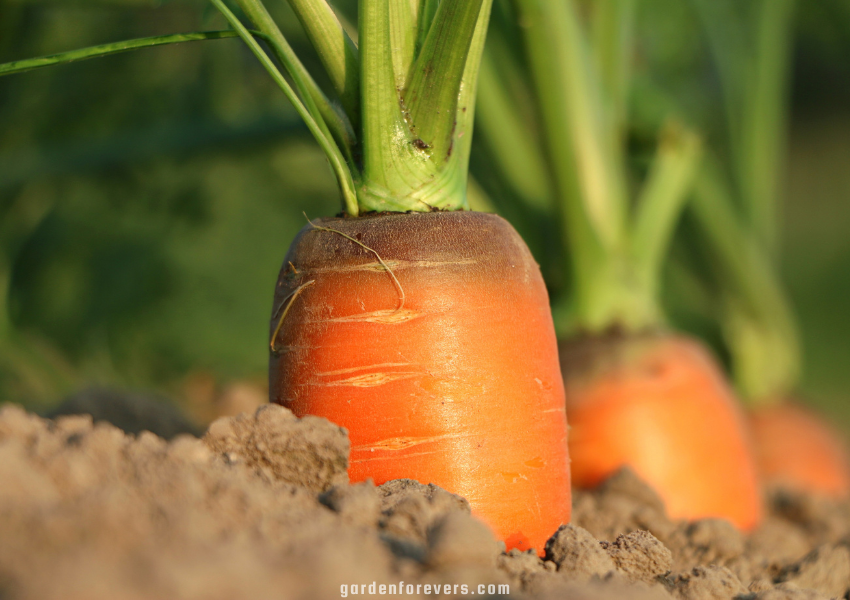
Carrot seeds usually take 10 to 21 days for germination. However, this time depends on the surrounding environment for various reasons, such as temperature, soil moisture, and seed quality. Due to unfavorable conditions, sometimes it takes more than 14-21 days for carrot seedlings to germinate. However, carrot seeds can’t grow well, if you can’t maintain an average favorable temperature. Furthermore, seeds germinate easily if you maintain humidity. Moreover, mulch can keep the roots of carrots cool and retain moisture in the soil. Therefore, you can use mulch and fertilizer in the soil mixture for better results.
Also, make sure the temperature isn’t too hot or too cold. The seeds can’t grow well in too hot or too cold conditions. Additionally, the seedlings grow much faster if you use fresh carrot seeds of good quality. Therefore, when picking seeds, be sure to choose good quality seeds. Then in 2-3 weeks, you can see the perfect growth of seedlings from carrot seeds.
How to care for a climate carrot sprouts
Best Light
Keep carrot seedlings in a place where there is enough sunlight. This plant grows well in the bright sunlight. It needs at least 6 hours of regular direct sunlight for healthy growth. So, don’t put it in a place where there is too much shadow. Shadow slows down the growth, and the roots of the carrot do not form properly.
Idea soil type
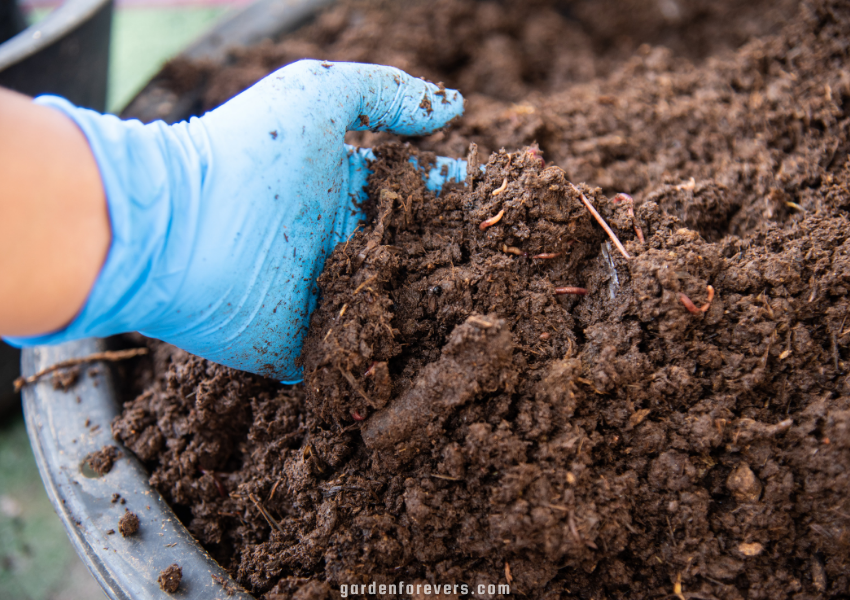
Ideal for carrots in loamy and well-drained soil. Therefore, before planting, mix a lot of organic matter in the soil. Especially if you mix compost with it before sowing to get good results. For carrots, the soil pH level should be between 6.0 and 6.8.
Watering
It is important to maintain moisture in the soil. However, make sure that the soil is not too wet. Because overly wet soil can damage the plant and lead to root rot. So, about 1 to 1.5 inches of water per week is enough. Remember, too much water can cause carrot roots to rot. Therefore, you can use mulch to retain soil moisture. It cools the roots and helps retain water.
Preferred temperature
The ideal temperature for growing carrot seeds is 16 °C to 21 °C. At this temperature, the seeds grow well. However, too hot or cold temperatures can cause problems with plant growth. Therefore, keep the carrot seedlings in a cool place to get a good yield. However, keep in mind that if the temperature goes below 10 °C, the growth of the plant may slow down.
Humidity
If the soil is well-drained, the seeds will germinate. A humidifier can be used in the winter. But, water regularly to keep the soil moist. But don’t water too much. Excessive watering can cause the seeds to rot.
Fertilizers
You can use organic fertilizers rich in nitrogen for better carrot growth. Furthermore, you can start fertilizing when the seedlings are 4-6 inches tall. In addition, the plant will fertilize occasionally throughout the growing season.
How Do I Use Carrot Sprouts?
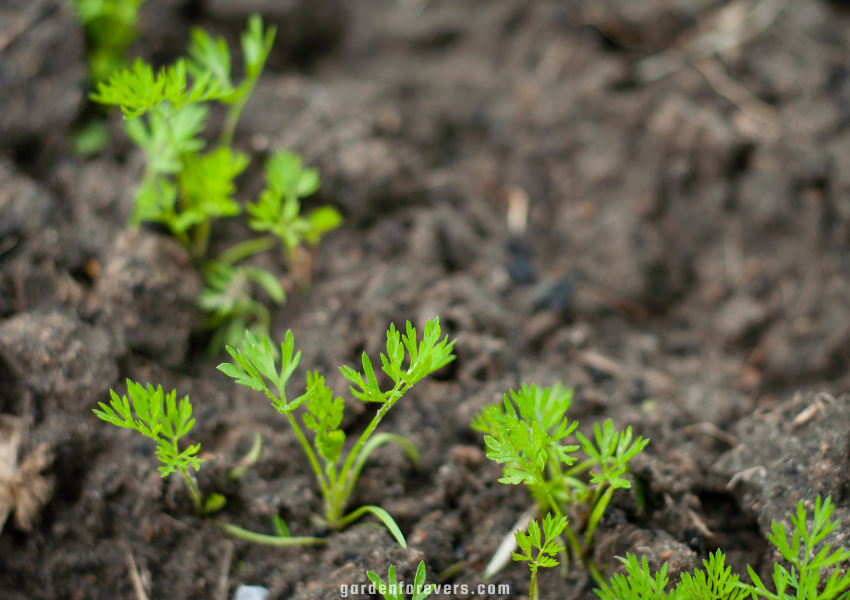
Carrots are mainly used as a vegetable in other cuisines. Additionally, carrots are rich in Vitamin A, Vitamin C, potassium, and fiber. It helps in enhancing the taste and nutrition of the food. So, you can use it for a healthy diet. However, carrot seedlings rot very quickly. So after you collect the seedlings, you use them in fresh conditions. Here are some popular recipes.
Salad
Usually, raw carrots are used for salads. The light taste of its carrot slices makes your salad even more special. Additionally, it helps in providing good nutrition to the body.
Smoothies
If you want, you can make a healthy smoothie with carrot sprouts. It is rich in nutrients that help to keep your body fit.
Soup
Carrot seeds are used in various types of soups. It helps in providing extra nutrition.
Microgreens
Collect carrot seedlings before they grow a little and become full-sized plants. Then, you can use this sprouted grain of carrots as microgreens.
Topping
You can put carrot slices as a topping on cooked food. It enhances the taste and flavor of the food. Also, the leaves are used in cooking and food decoration.
Common Challenges in Carrot Growth
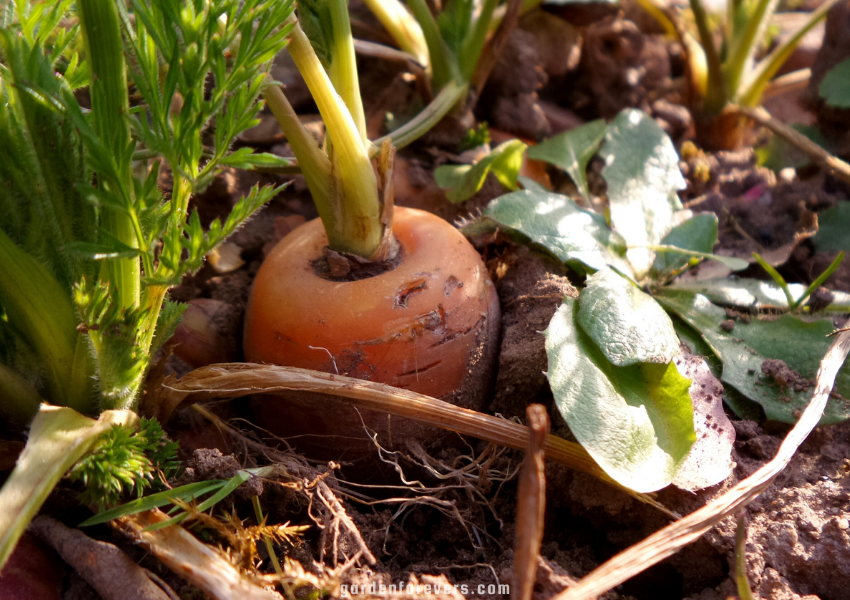
You can face various challenges in carrot cultivation. You should deal with these problems properly. If not, it can damage the crop. Below are some of the common challenges of carrot farming.
Insect or pest attacks
Various pests can affect carrot sprouts. However, most of the rust fly pests attack carrot seedlings more. The rust fly lays eggs in the upper part of the carrot near the ground. When the eggs hatch, the larvae enter the roots of the carrot. They feed on the roots of carrots. Additionally, it makes a tunnel through the carrots. On the other hand, weevil insects cause similar damage to carrots. Therefore, after planting the seedlings, rotate where you plant the seedlings every year. This can kill some insects. However, the simplest is better if you plant the carrots under the cover of the row so as not to damage the crop. Also, you can use anti-insect spray or repellents to control insects.
Attacks of nematodes
The nematodes are microscopic worms. It can attack carrot seedlings. As a result of its attack, the roots become badly deformed. If you can heat the soil through solarization, the nematode can die. Nematodes cannot be removed. Therefore, if you notice carrots infesting nematodes in a particular location, plant carrots elsewhere.
Bacterial and fungus attack
Bacteria or fungi can cause various infections. These bacteria are responsible for causing diseases such as Alternaria leaf blight, yellowing of carrots, and a handful of leaf spots such as bacterial soft rot. Once the plants are infected, it is difficult to remove them. If you ever see signs of a bacterial infection, remove the plants as soon as possible.
Drought
If the soil is too hard, the roots of the carrot will not grow properly. Many times roots do not grow straight and become deformed in shape. Drought can cause the plant to stop growing and the roots to dry out. Thus, water regularly to keep the soil moist.
Temperature fluctuation
Temperature changes can inhibit the growth of carrots. The roots of carrots become strong in extremely hot weather. In extreme cold, the leaves of the plant dry up and can die. Therefore, it is necessary to maintain a favorable temperature.
Animal attack
Many herbivores can eat the top green part of your carrot. Even deer, groundhogs, rabbits, and opossums are some of the animals that dig deeper and eat them. So, you can fence in the garden; that is the only effective method.
FAQs
How do carrots look when they start sprouting?
You can see green shoots on the soil surface. These are small and slender in shape. Additionally, these shoots break through the ground surface
Do sprouts look like grass leaves?
Yes, the carrot sprouts look like grass leaves. Additionally, you can see two smooth, straight leaves, or cotyledons. The true, feathery carrot leaves emerge later.
How long do carrots take to sprout?
Carrots usually take between 10 and 21 days to sprout. But you have to maintain ideal environmental conditions like temperature, soil moisture, and seed quality.
Do carrot seeds need dark light to germinate?
No, carrot seeds don’t need any dark light to germinate.
What challenges can I face when growing carrot sprouts?
You can face some common challenges. They are microbiological infections, pest infestations, extreme temperatures, etc.




